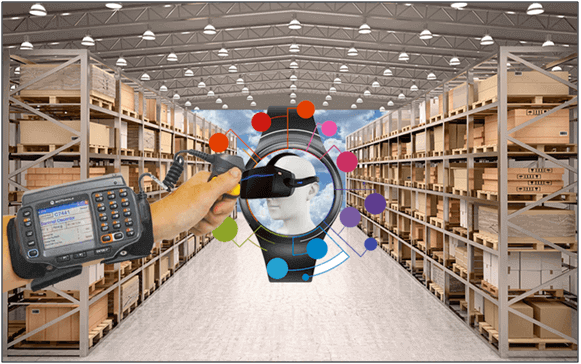It is 2019, and we are not too far off from experiencing a wacky robotic future predicted by Back to The Future. We may not have flying cars just yet, but Singapore is right on top of technological boom, of course, with robots and electronics taking over tasks like taking orders and serving food.
Table of Contents
Futuristic Food in Singapore
From automated kitchens to robo-waiters and high-tech food, Singapore’s food industry is definitely evolving to make life easier for us consumers. Be it sustainable food or vending machines that dispense hot food in a matter of minutes, Singapore’s on the right track when it comes to technology and efficiency in the food industry.
And to solve the problem of tediously long lunch queues, lots of eateries have come up with apps that’ll let you pre-order your food and collect it once it’s ready. You’ll save lots of time and get more out of your lunch hour, thanks to modern technology.

Technology has changed business for the better – it has allowed for more connectivity between employees and employers, made more information available, allowed for more streamlined storage of files, and increased analytical power of data. As technology continues to grow, change, and advance, the benefits of technology in business will continue to strengthen organizations.
Listed below are a few technologies trend that allows creating a suited environment.
Flow-through Sortation:
To keep the food and beverages inventory stocked, companies are bringing distribution center, sorted, stages and sequenced to quickly restock shelves on the same day. There are several of operations that are considering the flow-through sorting system to make the task of restocking simpler. It is more of an automated storage and retrieval solutions which has wheels like structure to move around automatically. This system also incorporates robotic palletize and de-palletize which offers scalability, modularity, and flexibility while transporting trays, totes, and cases. On top of that, the shelves are built with the longer-life material, no manual handling of inventory and high availability to restock shelves. This improves product quality that has a huge impact on consumer satisfaction that will increase business at a huge rate. Even in the future, there will be more sortation type of technology that will be much more reliable and flexible.

Equipment Innovation: Flexibility and Adaptability:
Operations are bend on to provide the best customer services that can increase the rate of productivity and delivery expectations. An e-commerce website has made it easier for the food and beverages industries to order product as per their convenience wherever, whenever and whatever they require. This has bent the focus of food industry to order profiles. Order-profiles are now taking the world by fire, whether it is small and frequent food products. This gave companies more options to place a retail order at a large scale and trifling e-commerce order. This food and beverages solutions and equipment allow the new trend to move towards more flexible and adaptable functionalities.
New Era of Voice Technology:
Voice technology is not something new. It is into the open world for a decade now. However, the food and beverages industry just realized the use of this technology that allows them to put a hold of several costs such as an online transaction. It also allows increased accuracy in the food industry. The cost reduction and return on investment have become the most observed field due to the enhancement in the voice world. Especially order picking has a huge impact due to the implementation of voice technology.
Earlier, handheld scanner devices were used that had a total of nine steps to wrap up the order picking. Whereas with voice technology has reduced the steps by 40 percent. It is also a great way to decrease mis-picks and picking error that to 50 percent lower the handheld scanners. The image below shows the Trends in the Food & Beverage Sector.

How Technology is Changing Singapore’s F& B Industry
When possibly every industry has felt the positive effects of going digital, there is no reason why the F&B world should not have a seat at the table. But for an industry this huge and competitive, it comes as a surprise that many operations, whether front or back-of-house, are still painfully manual. Look at it this way, though: This opens up endless possibilities for the penetration of digitization and automation. In this sense, the F& B sector has never been better primed to reimagine its processes – especially so in Singapore, with tons of resources pumped into the making of a technology-enabled Smart Nation.

Benefits to the Food Service Industry
The shift to food-producing robots offers substantial benefits for the industry. Since some states have a major shortage of kitchen workers, the ratio of demand to supply has caused compensation costs to soar. For example, a line cook costs around $40,000 a year. Robots, however, don’t require sleep, don’t take vacations and hardly ever get “sick.”
The full content is only visible to SIPMM members
Already a member? Please Login to continue reading.
References
Court Williams (2018). “The Growing Use of Technology and Robotics in Food Service” Retrieved from https://www.hotel-online.com/press_releases/release/the-growing-use-of-technology-and-robotics-in-food-service/, accessed 23/7/2019.
David Wong Khai Leong, ADPSM. (2019). “Implementing Centre of Expertise (CoE) for Food Supply Chain” Retrieved from SIPMM: https://publication.sipmm.edu.sg/implementing-centre-expertise-coe-food-supply-chain, accessed 23/7/2019.
Joe Baker. (2019). “How is smart technology changing the drinks industry?” Retrieved from https://www.drinks-insight-network.com/features/drinks-industry-technology/, accessed 23/7/2019.
Jessica Fang. (2019). “8 Futuristic Technologies in Singapore’s Food Industry That Have Secretly Popped Up All Around You” Retrieved from: https://thesmartlocal.com/read/futuristic-technologies, accessed 23/7/2019.
Michelle Lee Ean Wei, ADPSM. (2019). “New Technologies that will Impact Future Supply Chains” Retrieved from SIPMM: https://publication.sipmm.edu.sg/new-technologies-impact-future-supply-chains, accessed 23/7/2019.
New Gen Apps. (2018). “4 Major Tech Innovations and Trends in Food & Beverage Industry” Retrieved from: https://www.newgenapps.com/blog/tech-food-beverages-industry-trends-solutions, accessed 23/7/2019.
Pinky. (2018). “Farm-to-Kitchen: How Technology is Changing Singapore’s F&B Industry” Retrieved from https://www.zeemart.asia/post/farm-to-kitchen-how-technology-is-changing-singapore-s-f-b-industry, accessed 23/7/2019.

